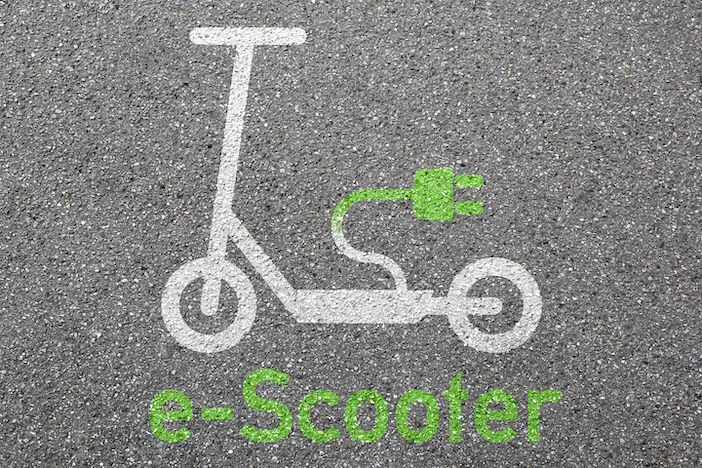
Elad Dubzinski, CEO of Powermat, looks at pros and cons of shared micromobility models and how wireless power technology has advanced to solve the prevailing challenges that micromobility providers face in terms of maintenance, operational costs, and customer satisfaction and how it can help accelerate widespread deployment and adoption of micromobility solutions.
Cities around the world are turning to shared micromobility solutions to address urban transportation challenges and meet sustainability targets. For example, in Paris, micromobility deployment is an important piece of its strategy to increase access to public transportation and ban gas powered vehicles by 2030. Research shows that adoption has been successful so far: from February to June 2020, Paris saw a 15% increase in the number of electric bike and scooter trips in the city and a 65% in distance traveled. Not only do e-scooter and e-bikes show promise for solving transportation and climate challenges, it’s a growing business opportunity: in the US alone, the market for e-bikes and e-scooters is estimated to reach US$200 to US$300 billion by 2030.
Some micromobility companies employ a dockless charging model while others have charging stations located throughout the city. While the dockless system has some advantages, data indicates that this doesn’t lend itself to a sustainable business model. Micromobility solutions based on the docking station model show promise for broader adoption if companies can improve the economics and efficiency of their docking and charging operations. Wireless power technology – which encompases charging and connectivity – presents a promising solution.
Here we take a closer look at the advantages and disadvantages of each model and how wireless power can serve as the necessary catalyst for spurring deployment of micromobility fleets.

Dockless charging
The logic behind the dockless charging model is to create and better meet user demand. The convenience of not having to go to a designated location to pick up or return scooters or bikes helps more people choose to use them. This model was common a few years ago but resulted in backlash across cities as residents grew fed up with scooters and bikes creating unsightly clutter and posing hazards to pedestrians and vehicles.
The wide distribution of scooters and bikes also meant that companies had to either deploy more of them to ensure people could find them where they were most needed (which not only cost more money but ran the risk of further public frustration) or relocate them back to places where there is a transit or transportation gap.
Then there is the matter of charging. Companies like Lime employed an in-house team as well as gig-economy workers to collect their scooters in vans or trucks to bring them either to homes or warehouses for charging and maintenance. This model defeats the purpose of getting vehicles off the road and makes the scooters unavailable for several hours, which reduces the opportunity for generating revenue. Consider that for another micromobility company, Bird, charging eats up 47% of its cost of revenue. The future of this model simply isn’t scalable, reliable or sustainable.

Docked charging
With docked charging, micromobility providers set up designated stations around the city. This simplifies the management of fleets and ensures that users can reliably access fully charged bikes and scooters, as long as they are near a station. They may still need to be picked up for maintenance, but transportation to warehouses is far less frequent than daily pickups of widely distributed scooters and bikes for charging.
A key challenge of this model is the infrastructure which takes up already limited curbside space traditionally used by personal vehicles and pedestrians. This can make widespread micromobility deployment more expensive and/or difficult. However, with growing support from municipal governments, micromobility solution providers are managing to make this model work. Look at the success of Citi Bike in New York City. Offering both electric and pedal bikes, NYC residents overwhelmingly approve of using taxpayer dollars to expand the Citi Bike system.
With the docked model growing in favor, micromobility providers are now increasingly focused on identifying solutions to improve their operations. This includes more efficient charging and data sharing management, enhanced battery safety, increased charging times, extended battery lifetimes, and an overall better user experience.

Wireless charging
Mid-range, contact-free magnetic induction-based wireless charging can manage power and data sharing across the entire fleet of micro-transit vehicles even if they aren’t properly docked. E-bikes or e-scooters don’t not have to be perfectly placed into docks and can be accounted for and/or charged up just by being in the vicinity. Ensuring that vehicles are dispatched, docked, constantly charging when not used, and accounted for correctly helps reduce costs for operators. It also mitigates the risk of a user picking up a bike or scooter that hasn’t been fully charged up or one that can’t track data like distance and time ridden correctly, which can lead to inaccurate usage fees and reduced customer satisfaction.
In addition, properly charging micro vehicles is important for maintaining battery life and performance. With advanced wireless charging integrated with fast data over the wireless power link, operators can keep tabs on battery health and have a clearer picture of when e-bikes or e-scooter batteries need to be replaced, which reduces the risk of safety issues associated with batteries. By properly charging the vehicles regularly, operators are able to maintain longer battery lifespans and reduce unnecessary vehicle deterioration – offering a viable option for longer lasting, cost-effective vehicle operations.

Due to the lack of human interactions with the various parts of the charger, wireless charging systems are likely to last longer than docked or plug-in solutions, leading to less maintenance work. Costs are also reduced due to the fact that wireless charging methods are normally fully sealed, meaning that they are durable to changing weather, and in robust environments. In wireless charging there are also no serviceable parts, active cooling, or mechanical connectors that wear out or need to be replaced.
In order to maintain the momentum of micromobility adoption, providers need to consider new ways of attracting and retaining riders. Wireless charging and data transfer enables wider user experience applications such as being able to simultaneously charge the riders’ phone, deliver traffic alerts, and enable gamification features.
As cities search for ways to lower carbon emissions, reduce traffic and increase equitable access to transportation, micromobility providers will be well served to implement wireless power technologies to improve their bottom lines, which will ultimately result in wider deployment of this promising (and fun!) 21th century solution around the world.
Images: AdobeStock





